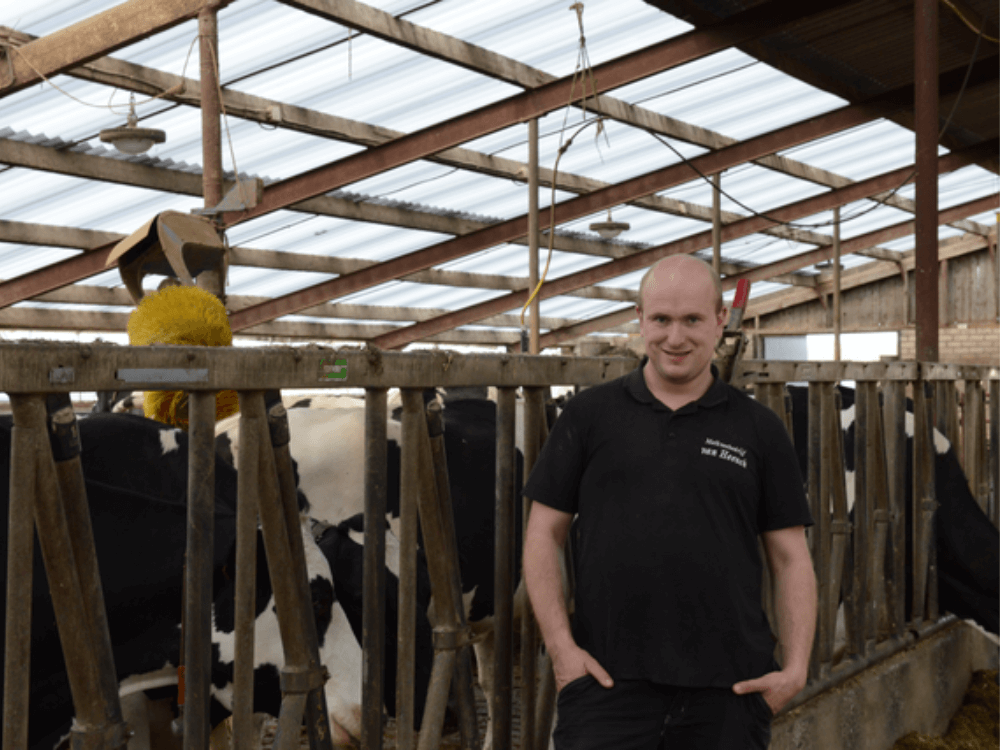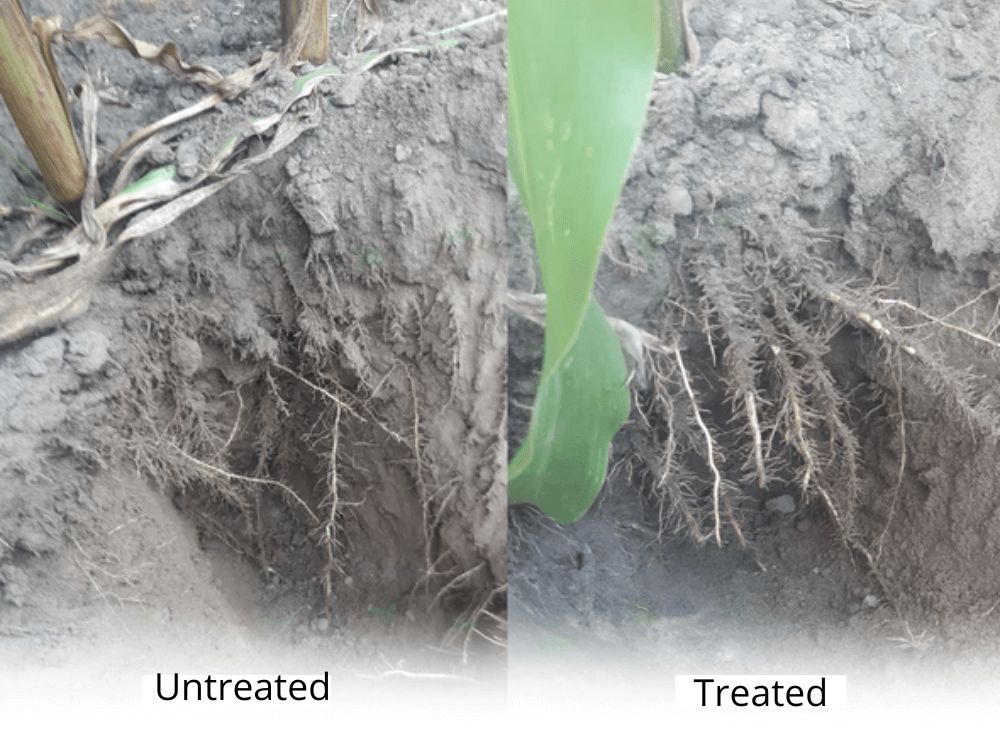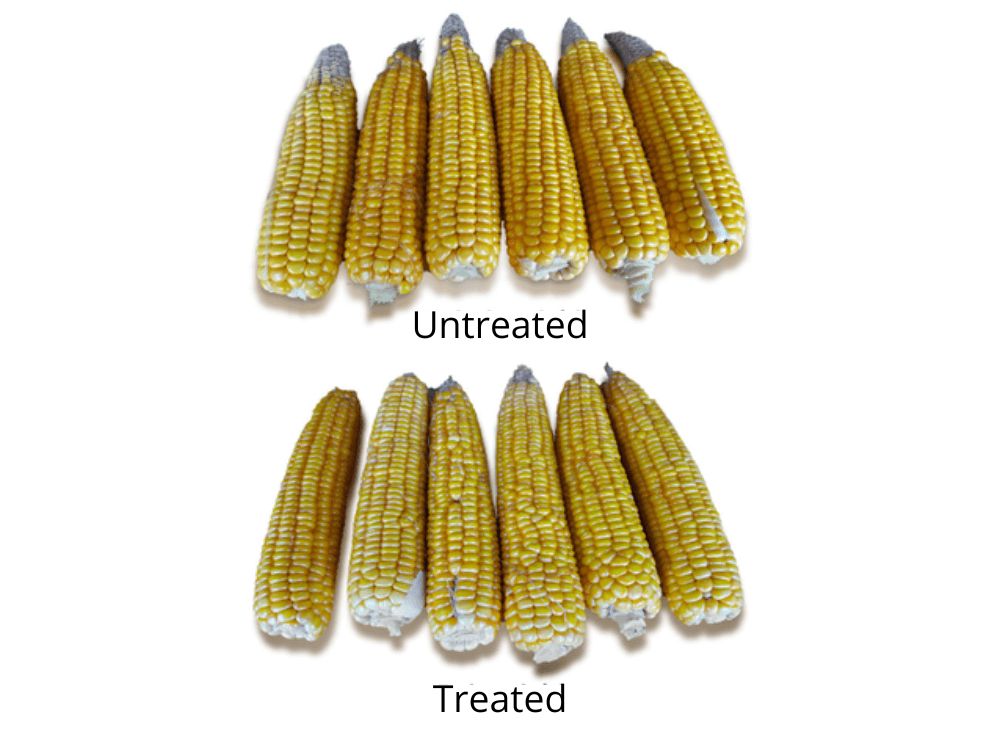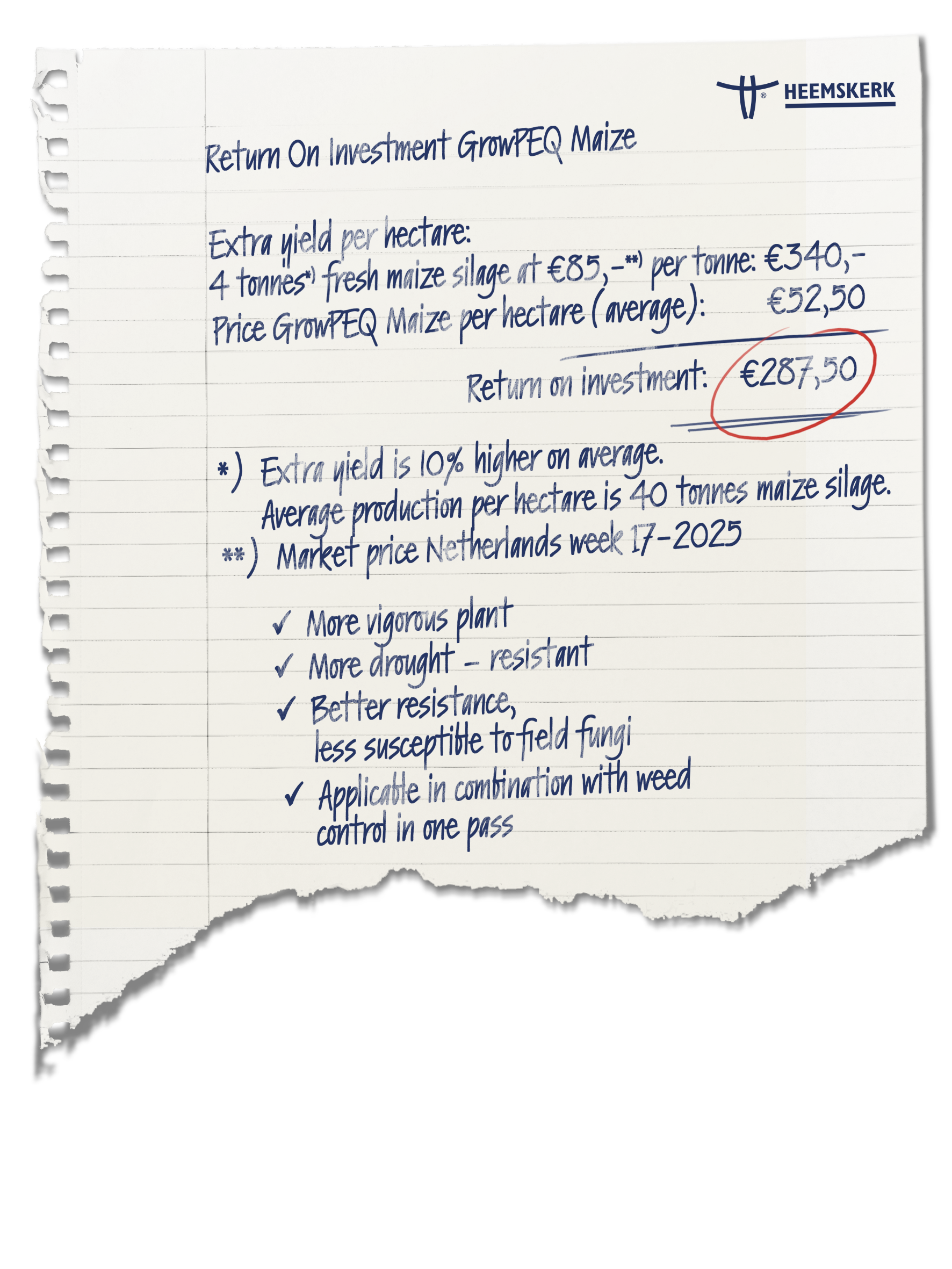More yield from own land with GrowPEQ® Maize
‘Seeing is believing’ is what Mark van Heesch thought about GrowPEQ Maize. In 2020, he applied the product for the first time and put it to the test. One home plot became a trial field. With an average difference of 50 grams between treated and untreated cobs, seeing was indeed believing.
‘In total that year, I treated 25 out of 27 hectares of maize with GrowPEQ Maize. To really know what it does, I split a 5-hectare plot at home into 3 hectares which was treated and 2 hectares untreated. I took the plants out of the soil to check the roots and weighed the cobs. The differences were clear. The roots of the treated plants were better developed and the root hairs were 45 cm deeper than the roots of the untreated plants. We picked 10 cobs at random from both plots as well and weighed them,’ says the farmer. The differences were significant. The cobs from the treated plants were not only better filled to the tip, they also weighed on average 50 grams more than the cobs from the untreated plants.
The calculation is easy
’’It costs €52,50 per hectare, but with cobs that weigh about 50 grams more, the calculation is easy. We did not weigh the yield during harvesting, but with 80,000 plants per hectare, you quickly get about 4 tonnes of fresh product per hectare’, Mark estimates the extra yield. It was not only the better root development and higher cob weight that caught his eye. ‘In the untreated plot, plants were affected with corn smut, while I did not see this in the treated section. I also noticed that the untreated plants turned brown much earlier and let the leaves hang down. The treated plants remained much more vital’.


Treated section less irrigated
The summer of 2020 was characterized by long periods of extreme drought and heat. On the sandy soils in Oirschot (the Netherlands), the maize also suffered stress as a result. ‘We had to irrigate the untreated plot twice as much as the treated plot. The plants on the treated part suffered much less stress and therefore stayed green longer’. During harvesting, the contractor had just the opposite idea. ‘I had not told him that I had treated part of the maize with GrowPEQ Maize. The contractor was under the impression that in fact the untreated part had been irrigated less because the plant had matured further and the yield was lower’.
More vital plants
Convinced of the added value, maize was also treated with GrowPEQ Maize in 2021. ‘In 2021 I treated a section with GrowPEQ Maize and I left a section untreated. Eventually I didn’t weigh the cops because the difference was obvious. The treated plots were clearly more vital than the rest. It can be applied at the same time as the herbicides, so you don’t have any extra work with it,’ says the cattle farmer who has already placed his order for 2022. This year, he will treat 40 hectares of maize. ‘In July, we will move our farm to another location in The Netherlands. In Oirschot we are close to the city center and no longer have any development opportunities. We bought an existing dairy farm about 30 kilometers away where we can keep 150 cows. We will grow 20 hectares of maize there, but we can also continue to use the land here’.


Trial in field beans
Besides 40 hectares of maize, the building plan consists of 17 hectares of grassland, 2 hectares of fodder beet and 3.5 hectares of field beans. ‘Last year I harvested field beans for the first time and I liked it. It contains a lot of protein and starch and the cows like taking it’. Because of his good experience in maize, he wants to use GrowPEQ Maize in this crop too. ‘I am not going to treat a boom width and I will treat the rest’. As far as maize is concerned, Mark is clear; “It pays for itself twice over”. What the effect is in the field beans we will know from autumn.


